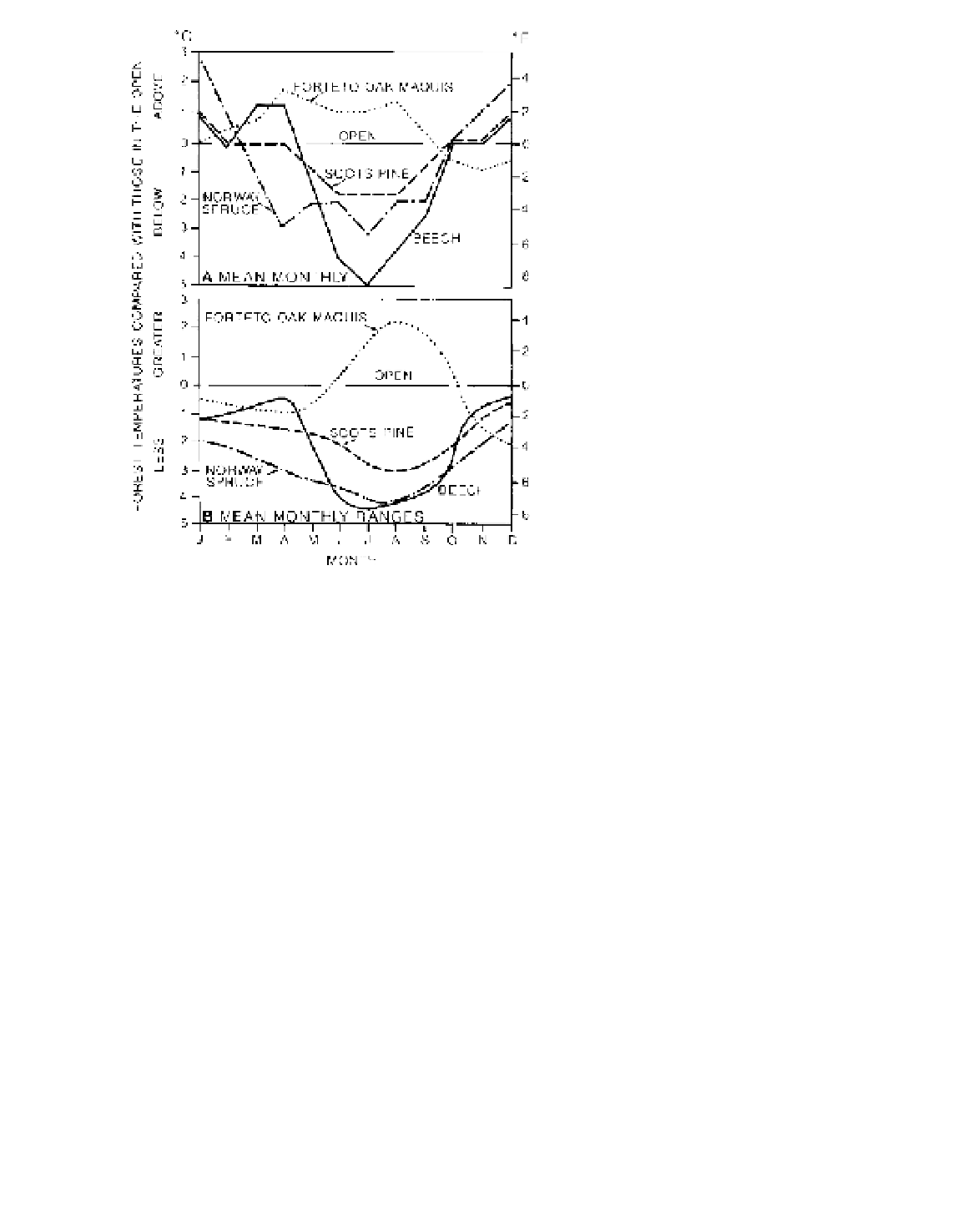Geoscience Reference
In-Depth Information
of the air in the lower storey from the upper two-thirds
of the canopy, as reflected by the reduced amplitude of
diurnal temperature range. At night, the pattern is
reversed: temperatures respond to radiative cooling
in the lowest two-thirds of the vegetation canopy.
Temperature variations within a layer up to 25-m height
are now decoupled from those in the tree-tops and
above.
D URBAN SURFACES
From a total of 6 billion in 2000, world population is
projected to increase to 8.2 billion in 2025, with the
proportion of urban dwellers rising from 40 to 60
per cent during the same period. Thus in this century
the majority of the human race will live and work in
association with urban climatic influences (see Box
12.1). The construction of every house, road or factory
destroys existing microclimates and creates new ones
of great complexity that depend on the design, density
and function of the building. Despite the internal varia-
tion of urban climatic influences, it is possible to treat
the effects of urban structures in terms of:
Figure 12.17
Seasonal regimes of (A) mean monthly temper-
atures and (B) mean monthly temperature ranges, compared with
those in the open, for four types of Italian forest. Note the
anomalous conditions associated with the
forteto
oak scrub
(
maquis
), which transpires little.
Source
: Food and Agriculture Organization of the United Nations
(1962).
1
modification of atmospheric composition;
2
modification of the heat budget;
3
other effects of modifications of surface roughness
and composition.
1 Modification of atmospheric composition
The vertical structure of forest stands gives rise to a
complex temperature structure, even in relatively simple
stands (Figure 12.18). For example, in a ponderosa
pine forest (
Pinus ponderosa
) in Arizona the recorded
mean June to July maximum was increased by
0.8°C simply by raising the thermometer from 1.5
to 2.4m above the forest floor. In stratified tropical
forests the thermal picture is more complex. The dense
canopy heats up considerably during the day and
quickly loses its heat at night, showing a much greater
diurnal temperature range than the undergrowth (Figure
12.18A). Whereas daily maximum temperatures of the
second storey are intermediate between those of the tree-
tops and the undergrowth, the nocturnal minima are
higher than either tree-tops or undergrowth because
the second storey is insulated by trapped air both above
and below (Figure 12.18B). During dry conditions in
the Amazonian rainforest, there is a similar decoupling
Urban pollution modifies the thermal properties of the
atmosphere, cuts down the passage of sunlight, and
provides abundant condensation nuclei. The modern
urban atmosphere comprises a complex mixture of
gases including ozone, sulphur dioxide, nitrogen oxides,
and particulates such as mineral dust, carbon and com-
plex hydrocarbons. First, we examine its sources under
two main headings:
1
Aerosols
. Suspended particulate matter (measured
in mg m
-3
or µg m
-3
) consists chiefly of carbon, lead
and aluminium compounds, and silica.
2
Gases
. The production of gases (expressed in parts
per million (ppm) or billion (ppb), respectively) may
be viewed in terms of industrial and domestic coal
burning releasing such gases as sulphur dioxide
(SO
2
), or from the standpoint of gasoline and oil

